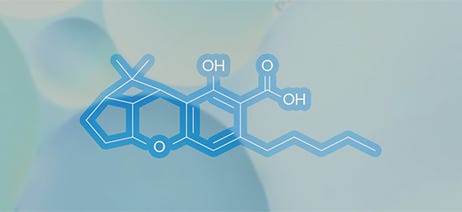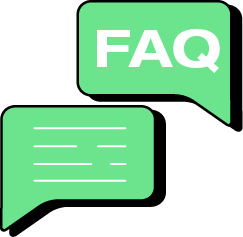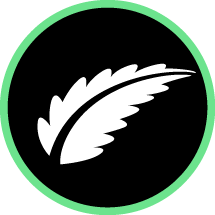
What is Cannabicyclolic Acid (CBLA)?
When it comes to cannabinoids, there are few that are more mysterious than CBLA. Since it was discovered in 1972, we have learned very little about it. In this guide, we’ll break down what we do know about this elusive cannabinoid and answer the questions:
- What is CBLA?
- What’s the Difference Between CBD and CBLA?
- Where Can You Find CBLA?
- CBLA FAQs
What is CBLA?
CBLA (cannabicyclolic acid) is a non-intoxicating cannabinoid created when CBCA (cannabichromenic acid) undergoes a photochemical reaction. This means that CBLA is created when CBCA is exposed to light. Most often, CBLA is found in cannabis that has been harvested early and stored.1
Because CBLA requires a reaction to exist, it is not an original cannabinoid. Instead, it was classified as an artificial product by the researchers that first isolated the compound in 1972.1 It’s typically found in very low amounts, occurring in cannabis plants during storage. Due to a variety of environmental factors, some of the cannabinoids in the flower can change. This includes CBCA becoming CBLA.
What’s the Difference Between CBD and CBLA?
There are a couple major differences between CBD and CBLA. First, because CBD (cannabidiol) is one of the primary cannabinoids found in cannabis, it is much easier to harvest and study than CBLA. This means we know so much more about CBD—and are still learning—than we do about CBLA.
Additionally, CBD’s status as a primary cannabinoid makes it easy to widely market in shops around the country. Conversely, CBLA occurs in such small amounts and in specific situations, that it isn’t even marketed in full-spectrum products. These factors, among others, make CBD and CBLA vastly different from one another.
Where Can You Find CBLA?
Because of how rare this compound is, it’s not easy to find, and that means there are no products available that expressly contain it. It’s possible, if you purchase flower, to find trace amounts of CBLA in it, but the likelihood of you knowing you just consumed CBLA is slim to none. Interestingly, CBLA is also resistant to decarboxylation, so while there is very little CBLA, there will also be very little CBL (the compound created when CBLA is exposed to heat).1


CBLA FAQs
The cannabis industry may not know a lot about CBLA, but we do have answers to these frequently asked questions:
Why is CBLA resistant to decarboxylation?
Despite the fact that CBLA is created because of a photochemical reaction, it’s actually one of the most stable cannabinoid acids when heated. Because of this, it doesn’t decarboxylate as easily as cannabinoids like THC and CBD. That said, when it does finally break down, it creates CBL.2
What is the difference between CBLA & THC?
There are several major differences between CBLA and THC:
- THC is a primary cannabinoid, and CBLA is a minor cannabinoid.
- THC occurs naturally, and CBLA requires a photochemical reaction to exist.
- THC is psychoactive, and CBLA is not.
- THC’s prevalence allows it to be studied and sold. CBLA occurs in such small amounts that we know very little about it, and we choose not to sell it because the cost to the consumer would be prohibitive at best.
What are the benefits of CBLA?
CBLA is a rare cannabinoid, and as such, we know almost nothing about it. Because of this, it’s impossible to identify what the benefits of CBLA may be. We can likely assume it is one of the many factors contributing to the entourage effect. Additionally, CBLA has a structure similar to CBCA and CBN. Because of this, some of the benefits we know about those two compounds could also apply to CBLA.3


Purchasing CBLA in Cannabis
Because of its rarity, CBLA-rich products simply don’t exist. Instead, you’re better off shopping for marijuana products like flower that may have miniscule amounts of CBLA in them. While it likely won’t have any obvious effect on you, it can still be a fun, unique way to experience the myriad of cannabinoids that marijuana plants contain. Next time you’re at one of our dispensaries, talk to our cannabis experts, and they’ll connect you with all the products you need.
Sources:
1. "CBLA (cannabicyclolic acid)," Leafly, https://www.leafly.com/learn/cannabis-glossary/cannabicyclolic-acid-cbla
2. “What is Cannabicyclolic Acid (CBLA)?,” New Phase Blends, https://www.newphaseblends.com/cannabicyclolic-acid-cbla/
3. “What Is Cannabicyclolic Acid?,” Leafwell, May 5, 2025, https://leafwell.com/blog/cannabicyclolic-acid


